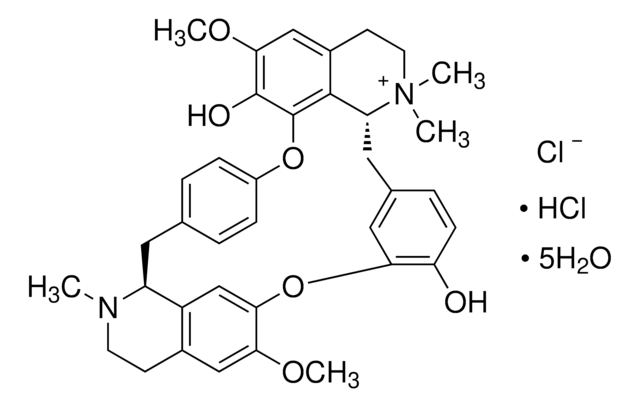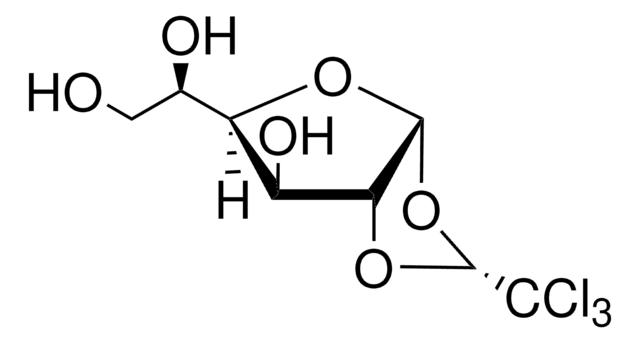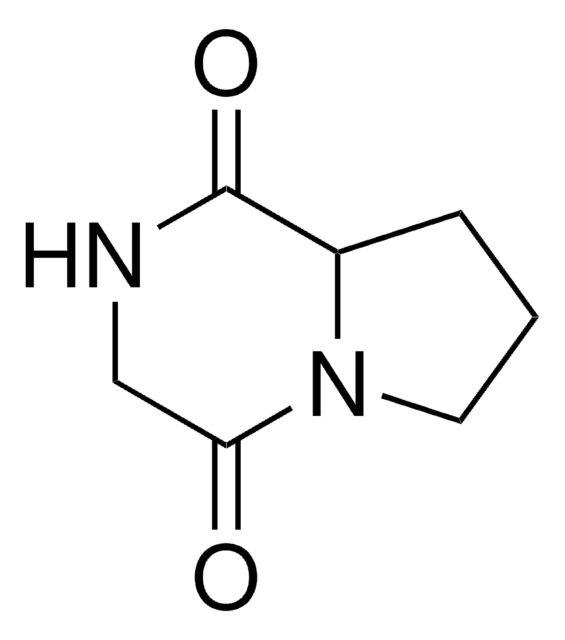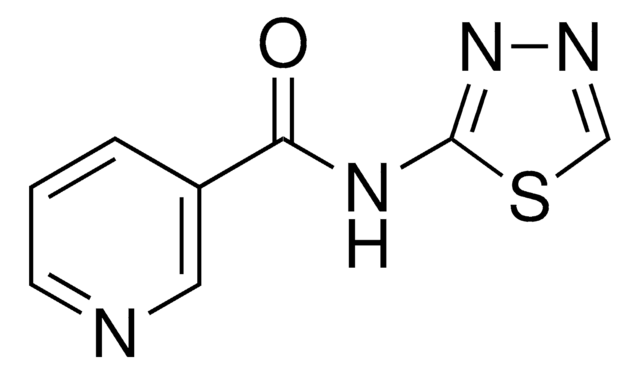C001
Acetylethylcholine mustard hydrochloride
>97% (GC), powder
Sinónimos:
Acetyl AF-64
About This Item
Productos recomendados
Nivel de calidad
Ensayo
>97% (GC)
Formulario
powder
condiciones de almacenamiento
desiccated
color
white
mp
78-81 °C
solubilidad
H2O: >5 mg/mL
ethanol: soluble
methanol: soluble
temp. de almacenamiento
−20°C
cadena SMILES
Cl[H].CCN(CCCl)CCOC(C)=O
InChI
1S/C8H16ClNO2.ClH/c1-3-10(5-4-9)6-7-12-8(2)11;/h3-7H2,1-2H3;1H
Clave InChI
CHWPASAPXMNLKO-UHFFFAOYSA-N
Aplicación
Acciones bioquímicas o fisiológicas
Precaución
Palabra de señalización
Danger
Frases de peligro
Consejos de prudencia
Clasificaciones de peligro
Acute Tox. 2 Dermal - Acute Tox. 2 Inhalation - Acute Tox. 2 Oral - Eye Irrit. 2 - Skin Irrit. 2 - STOT SE 1 - STOT SE 3
Órganos de actuación
Nervous system, Respiratory system
Código de clase de almacenamiento
6.1A - Combustible acute toxic Cat. 1 and 2 / very toxic hazardous materials
Clase de riesgo para el agua (WGK)
WGK 3
Punto de inflamabilidad (°F)
204.8 °F - closed cup
Punto de inflamabilidad (°C)
96 °C - closed cup
Elija entre una de las versiones más recientes:
¿Ya tiene este producto?
Encuentre la documentación para los productos que ha comprado recientemente en la Biblioteca de documentos.
Nuestro equipo de científicos tiene experiencia en todas las áreas de investigación: Ciencias de la vida, Ciencia de los materiales, Síntesis química, Cromatografía, Analítica y muchas otras.
Póngase en contacto con el Servicio técnico









